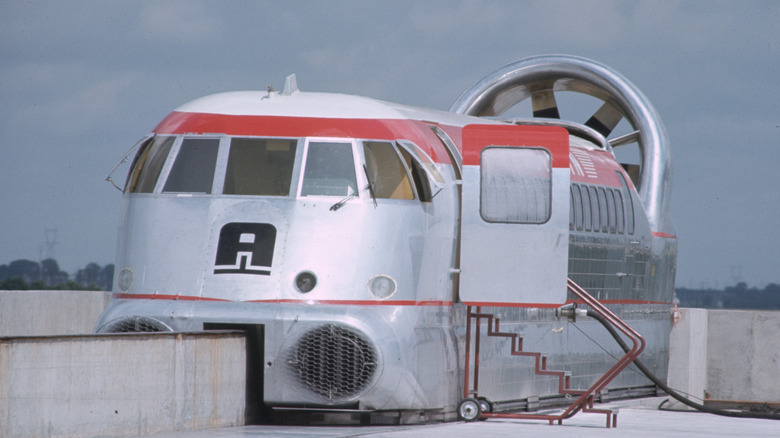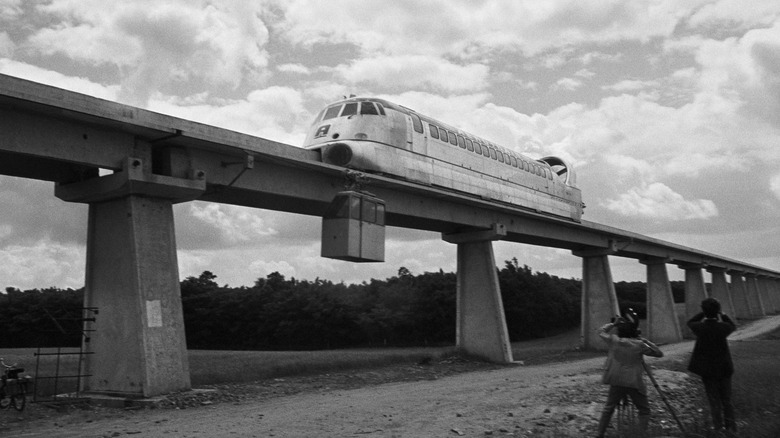The Aérotrain: A French Train Ahead Of Its Time That Never Left The Station
The average train that you may come across in the United States is powered in one of two ways. Most freight trains, like those manufactured by Wabtec or Caterpillar's Electro-Motive Diesel (EMD), are powered by electric traction motors that derive energy from onboard diesel generators. Passenger trains used by Amtrak and other rail lines use electricity from overhead lines or a third rail on the track to power electric motors to move along the rails. Amtrak's Acela train uses this method of propulsion and is capable of reaching 150 miles per hour. But whatever method is used to power the locomotive, most trains ride on a set of tracks and use a conventional set of wheels to move.
However, that is not the case with the French-pioneered Aérotrain, a train that rode on a cushion of air along one central track. It was designed in the early 1960s through the 1970s to be a high-speed rail solution. Engineer Jean Bertin was the man behind the project. And although the train and concept seemed promising at first, it ultimately never saw adoption as a major form of rail transportation.
Politics proved the end
The Aerotrain is more similar to an aircraft, or the Russian Ekranoplan than your average Amtrak locomotive. It utilized the aeronautical principle known as "the ground effect" to essentially glide on air. When an object flies very close to the ground at a high enough speed, air gathers under the craft and pushes upward, providing a limited amount of lift. After a series of small-scale models, Bertin's Aerotrain full-size prototype looked a little like a bus with a propellor on the back combined with the Disney monorail. It reportedly was able to reach 214 miles per hour in 1966 along a stretch of elevated track. The propellor was ditched in favor of a turbine engine. Using the new powerplant, it could hit 262 miles per hour, a little faster than the electric Rimac Nevera hypercar.
Tests proved that the concept was viable and could work. But as with many big public works projects, a fair amount of politics was involved. Valéry Giscard d'Estaing became the President of France in 1974 and oversaw the cancellation of the project in favor of France's other ongoing high-speed rail project, the TGV (Train à Grande Vitesse or "high-speed train" in French), a series of electric trains which still operate today and cruises at about 198 miles per hour.

